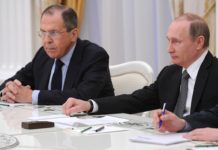By Farah Najjar and Sandra Gathmann
Sep 27, 2025
Sudan Gurung, who rose to prominence in this month’s protests, tells Al Jazeera he will run in March polls, promising youth-led ‘people’s government’.
The leader of Nepal’s recent youth-led protests that toppled the government within days has announced he will run in the country’s March general elections, saying his movement will “fight till the end” to build a people’s government.
In an exclusive interview with Start Here’s Sandra Gathmann, Sudan Gurung said his group is already mobilising supporters nationwide to form a “movement for change” rather than a traditional political party.
“They have dragged us into politics,” he said about the former government of “selfish” and “corrupt” politicians. “If it’s politics they want, that’s what they’ll get. We will be running for the next election because we are not going to back down now.”
Gurung, 36, rose to prominence as the face of a grassroots uprising led largely by Nepal’s Gen Z.
The demonstrations erupted after the government blocked social media platforms, including Facebook, X and YouTube, saying the companies had failed to register and submit to government oversight.
Continue Reading at aljazeera.com/news/
Five theses on the situation in Nepal
by Vijay Prashad, Atul Chandra
Sep 11, 2025
Following the resignation of Nepali Prime Minister KP Oli amid mass youth-driven protests, different narratives have circulated which simplify and misrepresent the complexities and reality on the ground in Nepal at the roots of this crisis.
If your house is not clean, then the ants will come through the door and draw in the snakes.
The crisis in Nepal escalated in early September, bringing down the center-right government of Prime Minister KP Oli. The immediate spur was the regulation and banning of social media on September 4. Protests over this action were met by police firing, which resulted in the killing of 19 protestors. This escalated into major manifestations, leading to attacks on the homes of politicians and the national parliament building as well as the presidential building.
Several narratives are circulating about the current upheaval, but two dominate:
- Systemic governance failure: That years of unmet promises, corruption, and opportunistic alliances produced a legitimacy crisis not for this or that party, but for the establishment. The present upsurge is explained as a popular backlash due to the cumulative neglect.
- Color Revolution thesis: That the protests are engineered by an external force, most of the fingers pointing at the United States and at the US Congress’ National Endowment for Democracy’s funding towards Hami Nepal (established in 2015).
Both theories make it easy for the stakeholders within Nepal to deflect responsibility – either onto foreign meddlers or onto a vague idea of the “political class”. There is no discussion in these theories of the underlying bourgeois order and its problems in Nepal: a century-long patronage economy, the control of land, finance, and government contracts in the hand of an oligopoly with close ties to the monarchy, and a growth paradigm depending on the export of migrant workers and of debt-financed infrastructural development. The structural sources of peoples’ grievances are flattened into simplistic, but evocative concepts such as “corruption” and “color revolution”.
Continue Reading at: peoplesdispatch.org
We remind our readers that publication of articles on our site does not mean that we agree with what is written. Our policy is to publish anything which we consider of interest, so as to assist our readers in forming their opinions. Sometimes we even publish articles with which we totally disagree, since we believe it is important for our readers to be informed on as wide a spectrum of views as possible.











